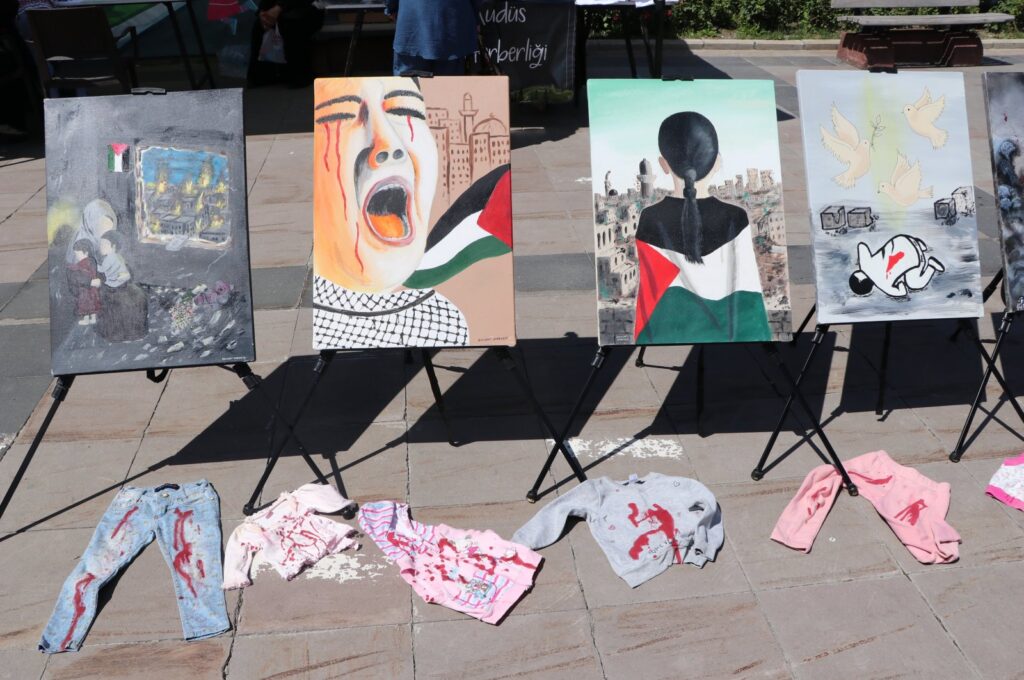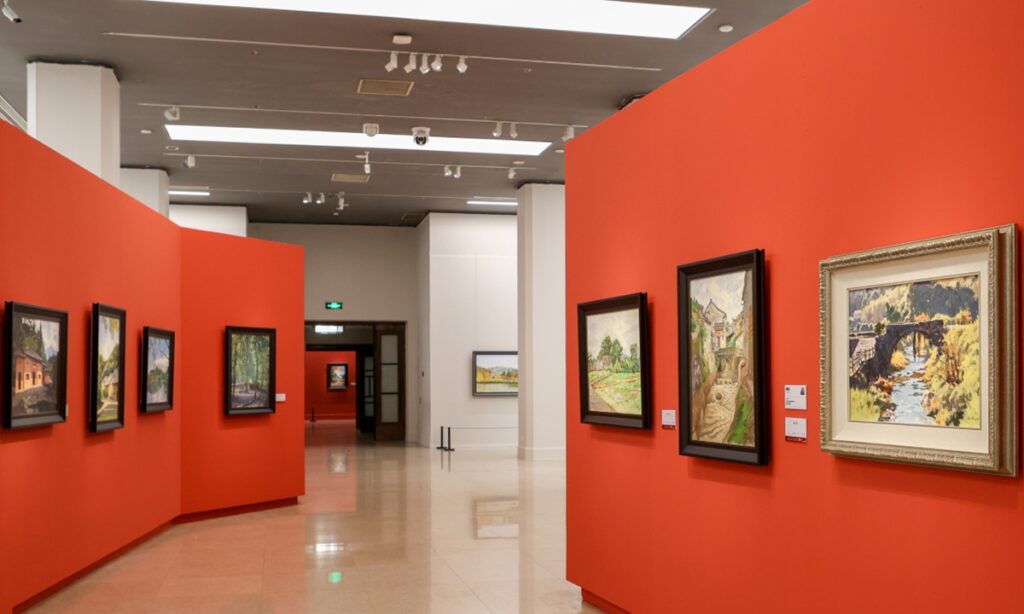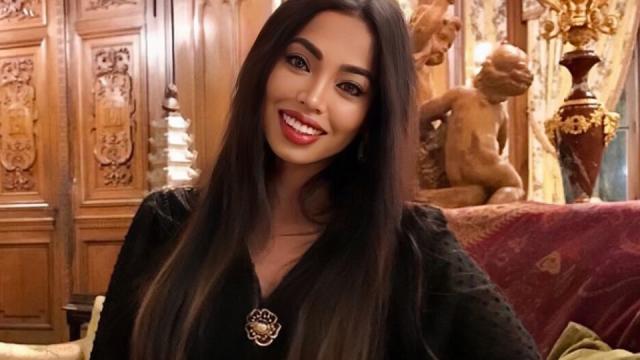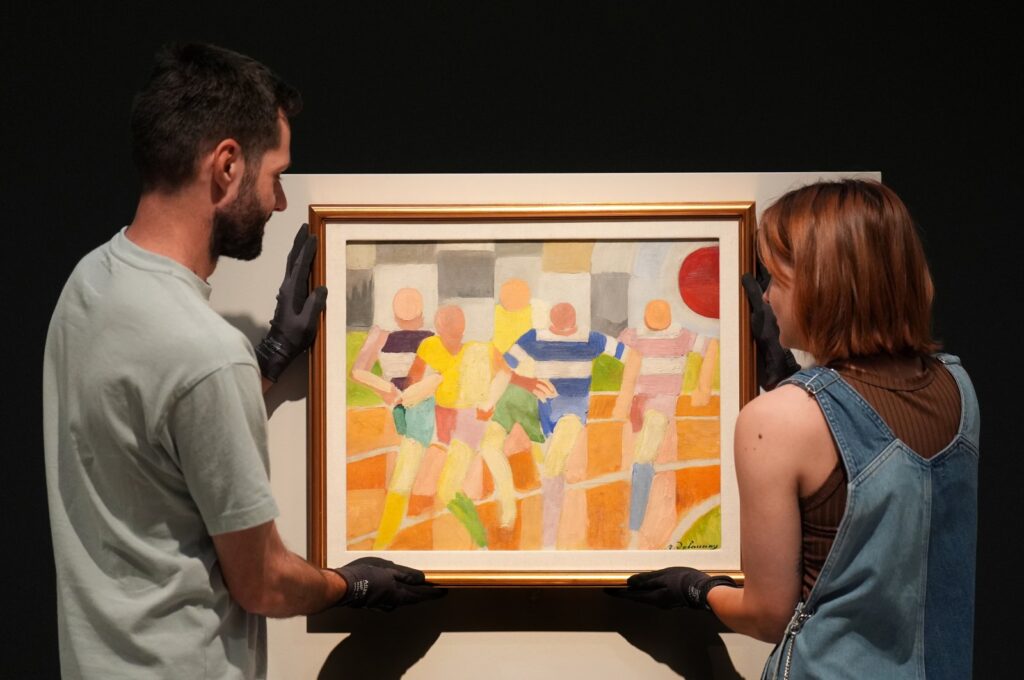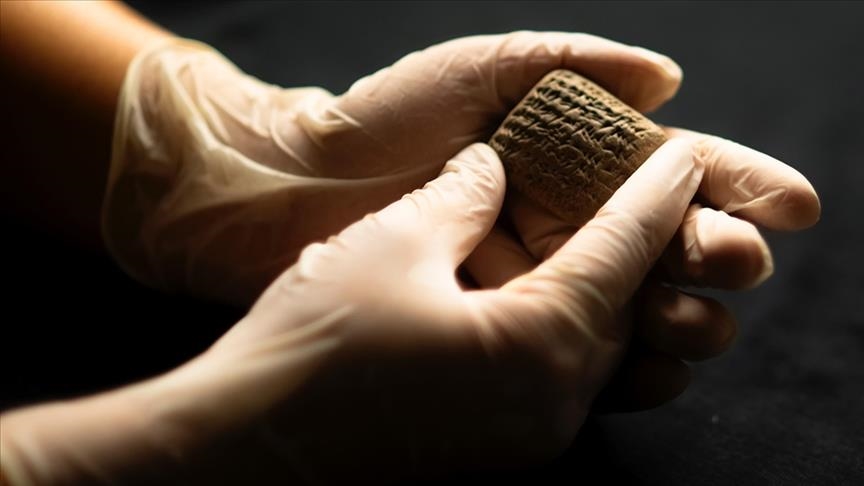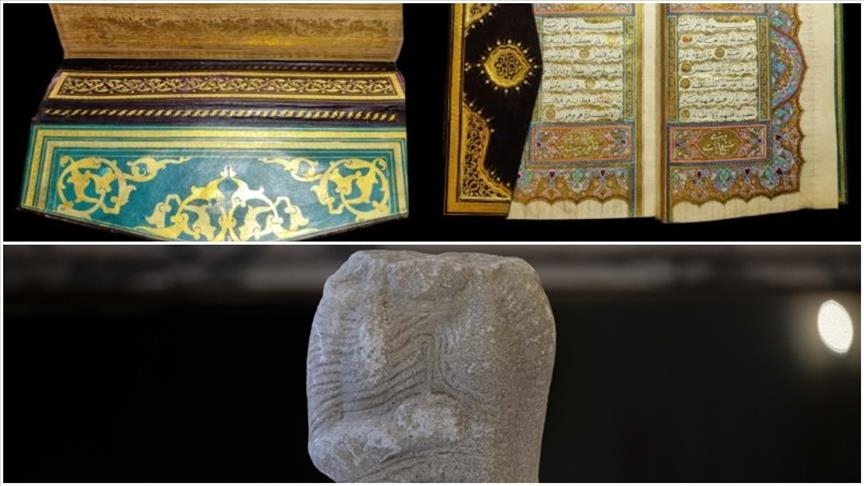
Maan Jalal
One day in 1984, in Basra, Iraq, an art teacher taught his students calligraphy. He drew four letters on the blackboard in Ruqʿah script, a plain style often used for signage.
As the teacher drew the letters alif, bah, jim, dal, Wissam Shawkat, then aged 10, watched absolutely entranced.
“Seeing that Arabic letters can take that form was fascinating for me,” Shawkat tells The National at the Mestaria Gallery in Alserkal Avenue — where his latest calligraphy exhibition, Letters of Love II, is running until November 30. “I was really intrigued by this.”
Today, Shawkat is an international leading authority on calligraphy, a self-taught master who pioneered his own technique known as “calligraforms.”
On the eve of his solo exhibition, Shawkat is surrounded by 50 original artworks all centred on the theme of love. He stands in the middle, surrounded by a landscape of letters, composed and morphed by a myriad styles that push the boundaries of traditional calligraphy practices. The result is a delicate balance of ancient forms and modern sensibilities.
“Letters by themselves are like an abstract shape,” he says.
“If you take any letter in Arabic or in English, any part of that letter, you will end up with an abstraction. We give it sound or when it’s merged with another letter, we give it meaning. But in reality, it’s a form, a beautiful form.”
As a teenager, due to the sanctions imposed on Iraq following the Gulf War, Shawkat’s resources were limited. Despite this stark reality, the artist took what summer courses were available, worked in sign-making shops and practised with different mediums and brushes. He drew comics, decorated skateboards, created sketches for friends, and took any chance available to practice mark-making and the art of calligraphy.
“If you spend years writing and perfecting this form, it’s definitely something you’ll fall in love with,” Shawkat says.
“After all these years, I arrived at this point where I love the abstract form of the letters and I think that’s why I’m still making it.”
Letters of Love II was launched on November 11, a significant date for Shawkat. Not only did he leave Iraq on the same date in 2002, but 11 years ago, his solo exhibition, Letters of Love, took place in New York to major critical success.
Shawkat’s new exhibition is an extension of the technical ideas he first experimented with in the New York show, an homage to his personal milestones and, of course, a celebration of love.
“For me, love is a universal concept,” Shawkat says.
“Plus, I wanted to take calligraphy away from always being associated with religion. Historians from the West call it Islamic calligraphy, but it’s not true. The art of calligraphy is about the language, it’s not the religion.”
Shawkat took the Arabic word for love, “hub”, and some of its variations such as “mahaba”, meaning to have love for something, “‘ishq”, to long for something, and “gharam”, meaning desire, and reconstructed them — experimenting with the inner and outer forms of the letters and the composition of the words; blocking parts of their shape, opening up others; extending and bending; changing their silhouettes.
The range of forms and shapes he created within each frame are meticulously composed. They exist in relation to the frames and the spaces they occupy, possessing a uniquely stylised sense of harmony fuelled by Shawkat’s departure from the traditional “rules” of calligraphy.
Even the notion of freedom is expressed uniquely within the works. Free of the cliche of words bursting out of their frame or paint spilling out on to the physical space, freedom is organic and planned in Shawkat’s work. It teases and pushes the idea of Arabic letter forms and calligraphy into new spaces.
“I want to show something aesthetically beautiful,” Shawkat says. “When I’m sketching or putting together the work, everything I do is first in black and white. Colour comes as a second thing, I work with it later.”
It’s this focus on form and composition that gives the varied works an overall sense of grounded weight, rooted and connected to each other through a slow gravitational force, as opposed to an intertwined sense of drama.
Shawkat achieves this thorough planning, like an architect of words, an engineer of letters.
“When I started planning for this show, I went back and opened my old files from the New York show,” Shawkat says.
“I found some ideas that were interesting but weren’t refined yet. I took some of them and made them work, and now they are pieces in this show. It’s always a process, it’s progress. Sometimes it fails and sometimes it works.”
Shawkat’s work reveals not only an artist who has a significant understanding of the forms and symbolism of letters and language, but one with technical knowledge and prowess.
All the paper in the show is handmade, the ink made from personalised pigment colours. Each piece is a juxtaposition of these traditional materials with Shawkat’s forward-thinking experimentation in calligraphy.
It’s also these part-conscious, part-instinctive decisions that make Shawkat’s work timeless and appealing to an international audience, many of whom don’t speak or can’t read Arabic.
“I think people who don’t know Arabic fall in love with calligraphy for the same reason I first did in class,” Shawkat says.
“It’s because they enjoy the form. They look at them as beautiful abstract shapes. As simple as that.”
Courtesy: thenationalnews
The post Iraqi calligrapher Wissam Shawkat’s love letters blend tradition and modernity in new show appeared first on The Frontier Post.



